Coin Values Moving with Precious Metals: Up-Dated 12/8/2025: Gold $4212 | Silver $58.12
1915 Penny Value
A key variety to 1915 penny value is the "S" mint issue of San Francisco. Saving 1915 pennies for collections or appreciation in value tapered off after the initial release and excitement of the Lincoln series. Add in low production, and the result, these coins are scarce today.
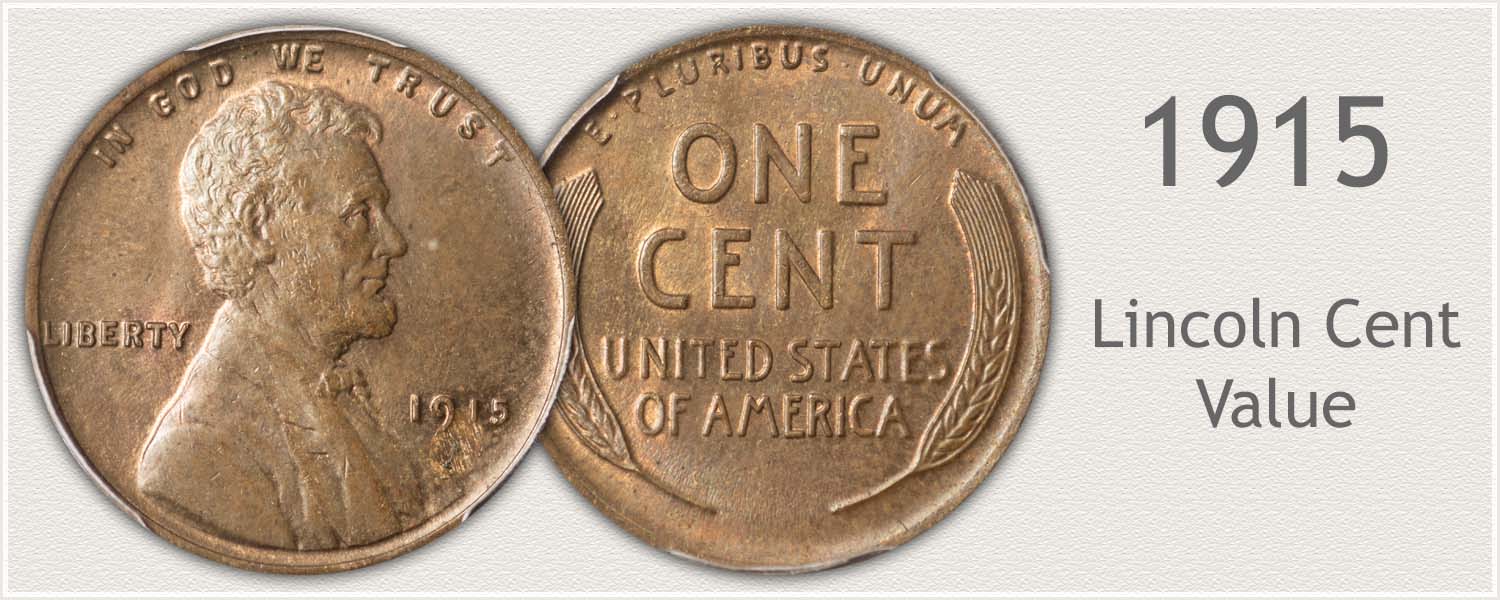
Steps Leading to Value:
- Step 1: Date and Mintmark Variety – Identify each date and its mintmark variety. Premiums awarded to "S" mintmark.
- Step 2: Grading Condition – Judge condition to determine grade.
- Step 3: Special Qualities – Certain elements either enhance or detract from value
| 1915 Lincoln Penny Value | ||||
|---|---|---|---|---|
| Condition of Coin | ||||
| Date | Good | Fine | Extremely Fine | Uncirculated |
| 1915 Lincoln Penny Value Up-Dated | 2025 | |||
| 1915 | $1.54 | $4.01 | $41 | $53 |
| 1915 D | $1.65 | $4.66 | $27 | $55 |
| 1915 S | $7.67 | $20 | $62 | $224 |
Important to value is judging each coin individually. If a few coins to evaluate or many, early year Lincoln cents require close inspection.
Overall, three main factors are needed to locate a specific value to your coin when reading the chart. Begin by confirming: Date | Mint Mark Each variety of 1915 wheat cent is imaged, locating mint marks.
Next step is important, judging condition. Noticeable with all 1915 cents is the difference in value - desirability separating high grade examples. Details needed in judging condition are imaged and described in the grading section.
Step 1: | Date and Mintmark Combination
Identify 1915 Penny Variety
Notable to 1915 is its place as the 7th lowest mintage of wheat cents. Combined, the three varieties from the mints totaled 55,973,970 coins. Any 1915 penny is worth a close inspection.
1915 Lincoln Penny
No Mintmark Under Date: Philadelphia Mint Struck the Coin
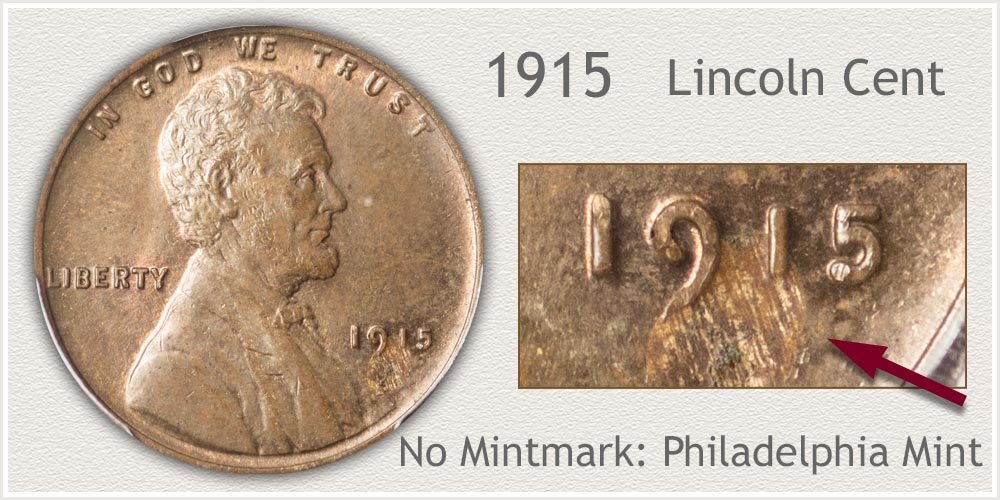
An excellent date to interest a new collector. A 1915 penny is now very old and in well-worn condition Rarity scale is one: Abundant - with an affordable value. However, inspect the coin carefully. In higher grades, value jumps dramatically. Look closely at Lincoln's coat and bowtie, any boldness if detail indicates a better condition coin. See next step, grading to confirm. In lightly circulated grades, rarity - value, indicates an Elusive coin.
1915-D Lincoln Penny
"D" Mintmark Under Date: Denver Mint Struck the Coin
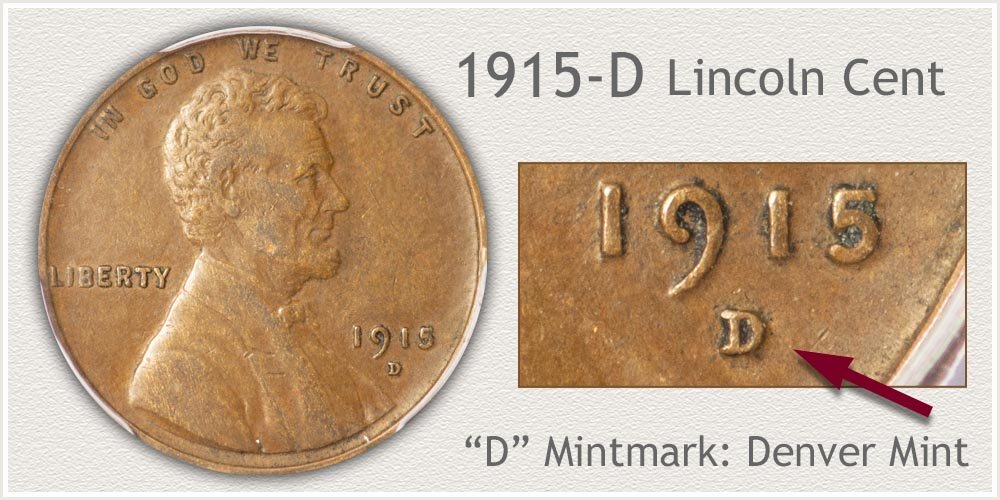
Nice looking 1915-D wheat pennies in all grades are valued by collectors. Absence of distracting marks is a real positive, along with crisp details to lettering and date. Pleasing eye appeal is a good indication of a higher-grade coin.
Typically most of these early cents saw extensive use in circulation. Heavily worn coins are Abundant. Elusive are nicer examples, notice the large increase in value beginning with the Extremely Fine grade.
1915-S Lincoln Penny
"S" Mintmark Under Date: San Francisco Mint Struck the Coin
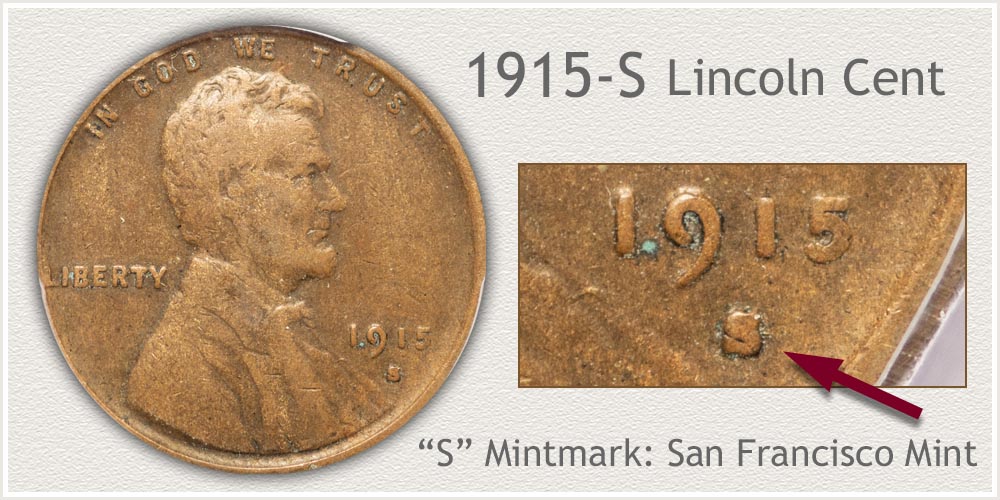
1915 pennies from the San Francisco mint are scarce is all grades. The amount of wear to the coin partly defines grade and value. A subtle factor is overall eye appeal, finding strong bold features to all parts of the coin is a challenge.
To form a complete judgement of the coin, see the grading section just below. A strong collector base forms a strong market for these early era wheat pennies.
Step 2: | Judge Condition to Identify Grade
1915 Penny Value is Grade Specific
Grading judges amount of wear appearing on a coin's surface. A set of standard Grades defines the stages of condition. Collectors use grades in the value process and are listed on the charts.
Of concern is preservation of condition. Proper storage in a dry location is an important part to maintaining value. Copper is prone to turn a dark shade of brown, sometimes very dark if exposed to humid air. A container with a tight lid does a good job of keeping these old pennies from the atmosphere.
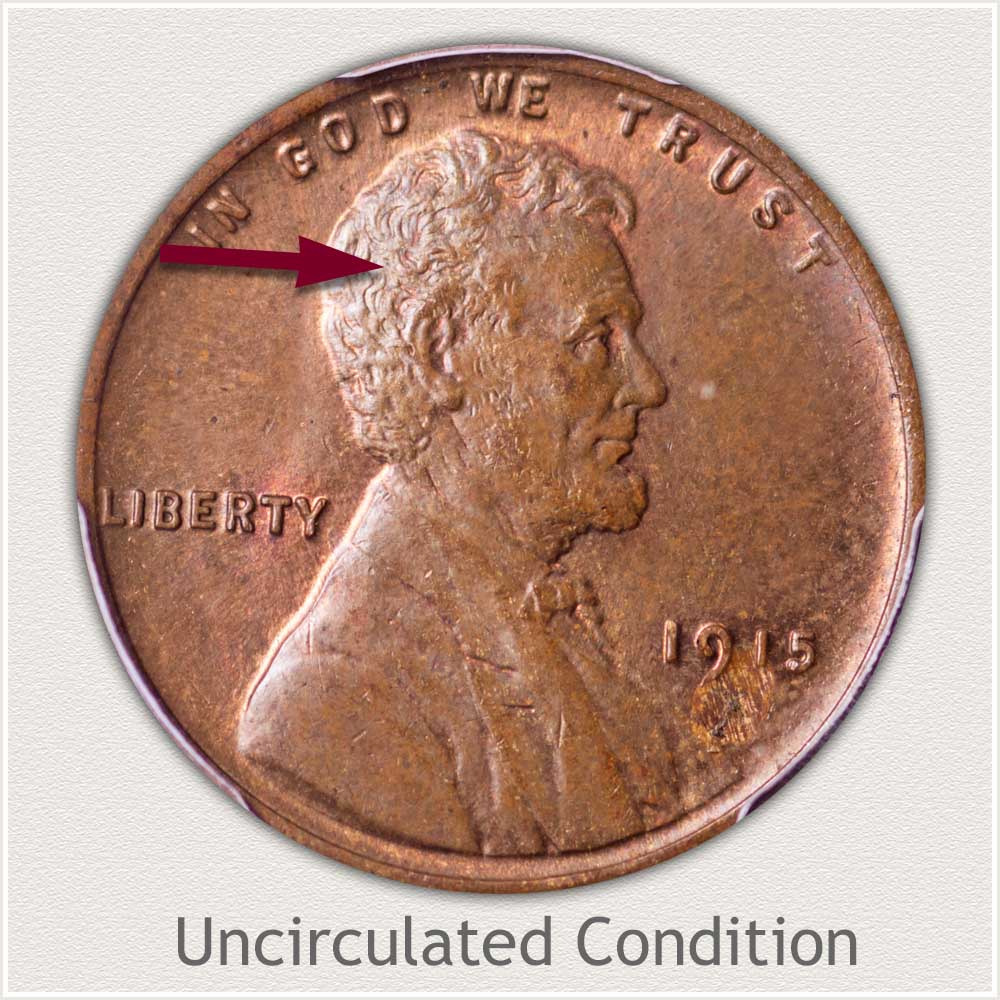
Uncirculated Grade: To reach the Mint State - Uncirculated grade a wheat penny has survived without any wear to the devices, legends, and fields of the coin. Original surfaces remain covered with mint frost displaying a fine texture and reflectivity.
Many fine details exist on a coin without wear. One area prone to contact is just above the ear extending forward to Lincoln's temple. Hair waves are high in profile and must remain with a rounded profile. A clear separation of the temple area is noted. High and low areas are distinct with no smoothing on high points.
First minted, copper is a bright reddish color. Toning begins almost immediately changing the colors to shades of brown. Mint state coins with toning have mint frost "underneath" these colors and radiate a shine. Noted is original color along the rims giving a bright outline to Lincoln's portrait.
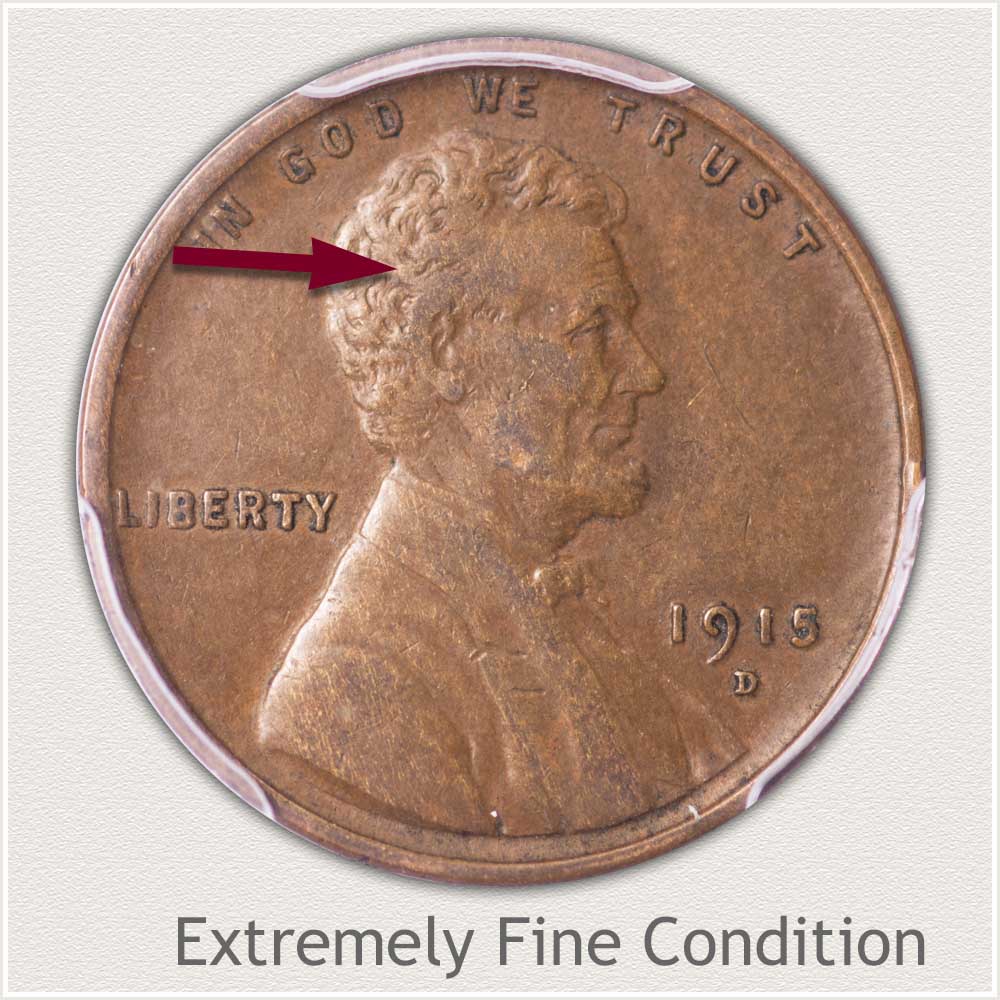
Extremely Fine Grade: Slight wear has removed the highest points of metal on a wheat penny in the Extremely Fine grade. Fields of the coin no longer display the shimmer of mint luster.
Lincoln's portrait remains full with major elements bold. His temple area is well defined and separated from the wave of hair above the ear. Flatness is visible in the wave of hair and a small connection to the ear has developed.
With ample detail remaining and crisp appearance overall collectors place a value on early cents in the extremely fine grade. Distracting marks are absent from this 1915-D penny adding to eye appeal.
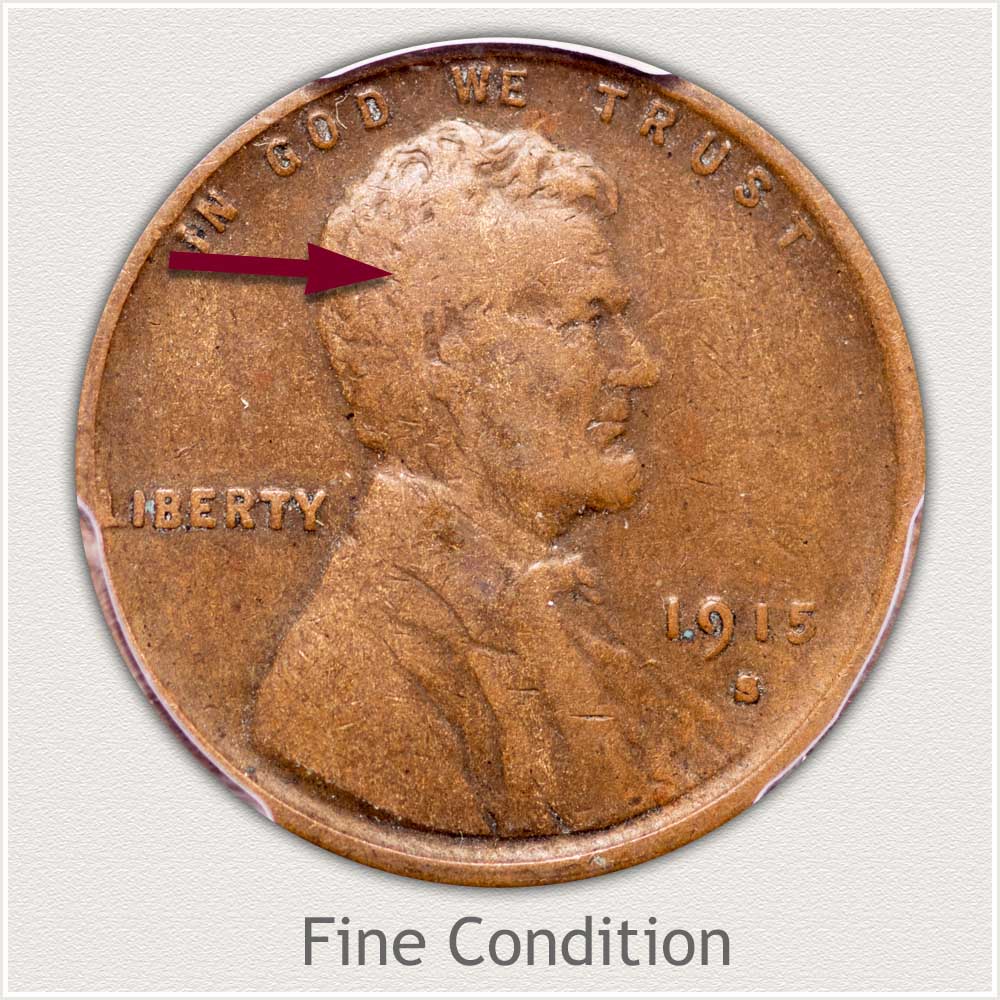
Fine Grade: A merging of major design elements defines a coin in Fine grade. Small details and separation lines in Lincoln's coat and hair have worn smooth.
In the temple area, a small connection to the wave of hair above the ear has developed. Lincoln's ear is merging with his hair. Remaining are distinct separations from the temple area and cheek. Once rounded profiles are beginning to flatten but do not connect.
Ample contours remain, defining high and lower areas, lending a sharpness to this 1915-S penny. Toning ranging from light to deeper shades of tan help highlight details.
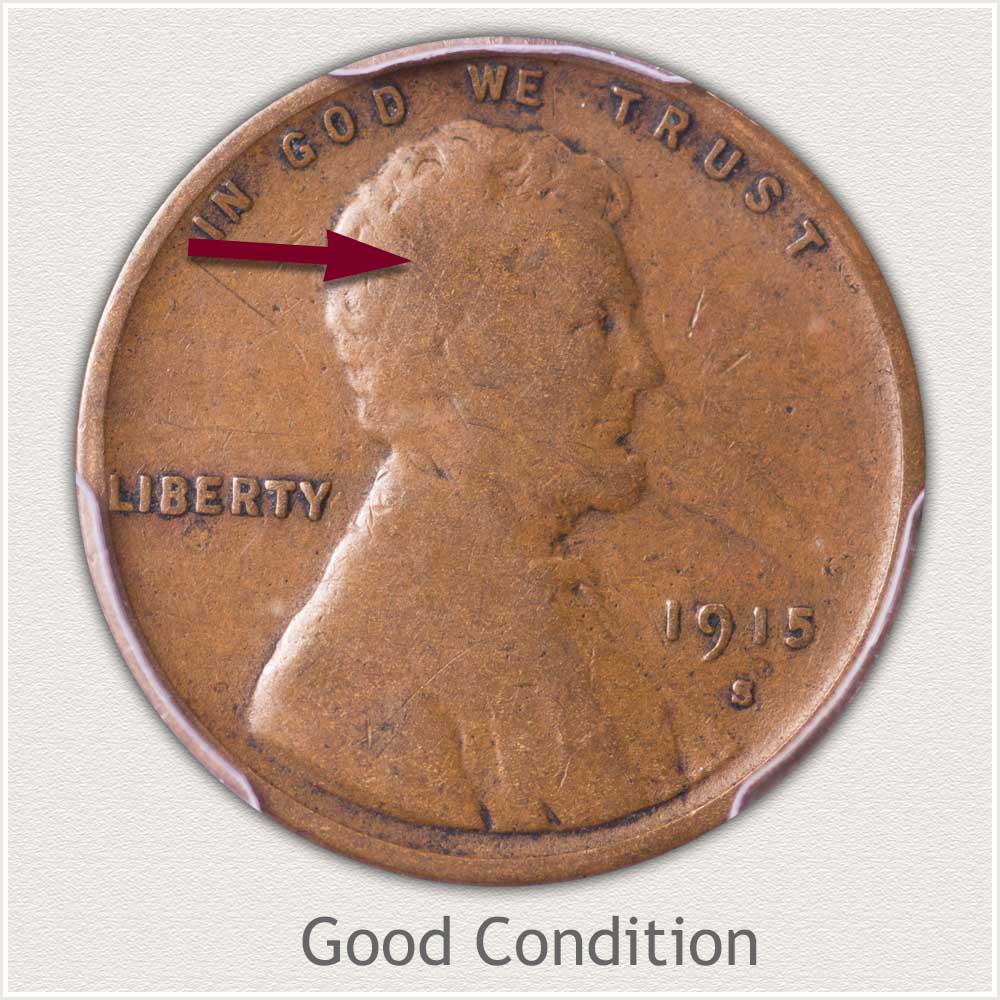
Good Grade: High profile areas of Lincoln worn to a flat plane defines the Good grade. No longer is a separation of his hair and face visible.
Waves of hair above his ear are missing and a separation from his temple is no longer visible. As a central position on the coin it has worn flat with little definition. Extensive wear has removed the majority of Lincoln's design.
Taking heavy wear and loss of detail into consideration, there are positive qualities visible on the coin. Even color first catches the eye. A nice, soft brown toning has developed, giving depth to remaining details. Eye appeal adds value potential.
Video | Grading Lincoln Wheat Pennies
Fine points to condition often separate a significant change in value. Grading Lincoln Wheat Pennies expands upon the grading process. Video plus descriptions focus on key elements to condition. Examine high value and high condition old pennies in greater detail.
Step 3: | Special Qualities Enhancing Value
Recognizing Cleaning Attempts to Wheat Pennies
Over the course of the wheat penny series many of these coins have been cleaned. Various reasons are behind cleaning a coin, mostly an attempt to improve special qualities. Results differ in the amount of "improvement." However, all are considered by collectors as lowering appeal. A coin in its original state, no matter the condition, is always preferred. Value follows appeal, upwards and downwards, cleaning lowers value.
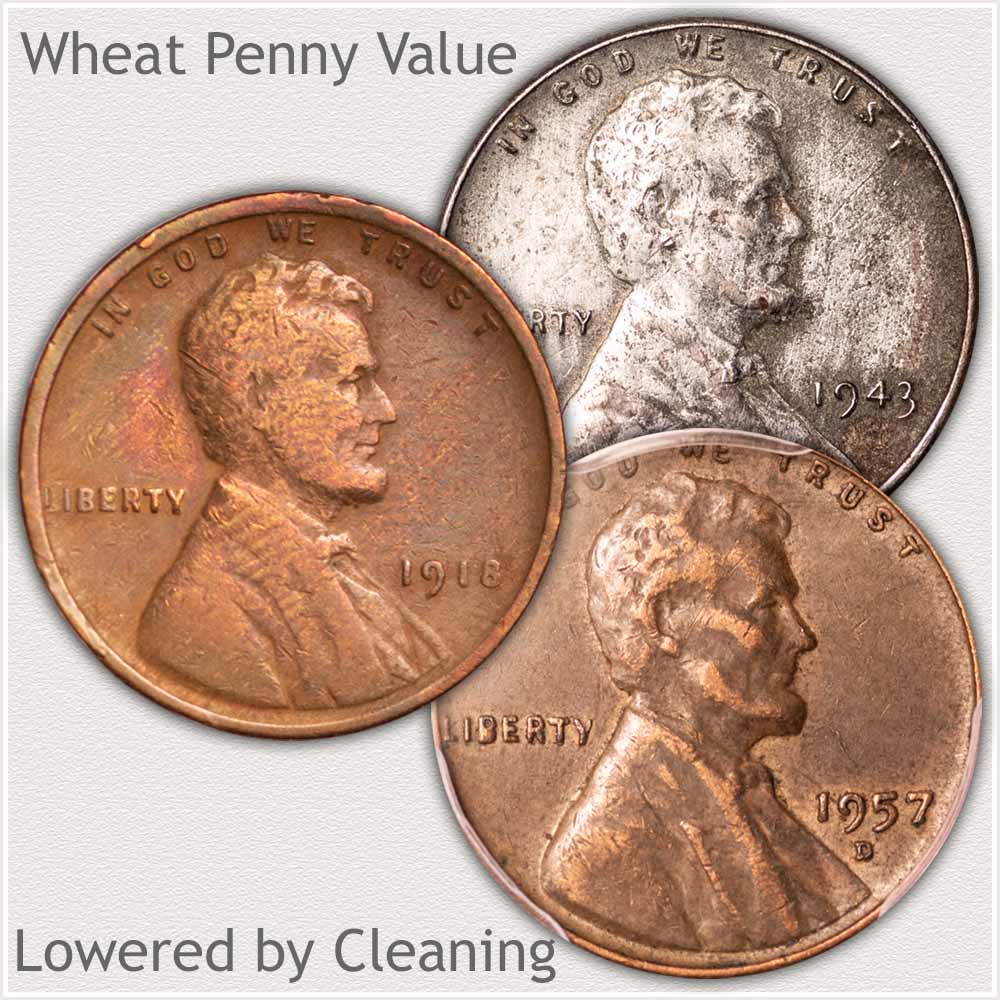
Here a 1918 penny was subject to a chemical cleaning using Brasso. Older copper coins tone very dark over time. A cleaning to brighten and create a shine does not fit with the amount of wear to the coin. Circulated wheat cents are shades of brown naturally and this coin is recognizable as cleaned.
1943 pennies are an alloy of steel with an outer layer of zinc. Original color when minted is a blueish-silver luster. Zinc hazes over a whitish color when reacting with humidity and a dull grey as it wears. An unnatural color is evident on this penny and the small areas of wear do not show the normal contrast to surrounding areas. Incomplete cleaning, a monotone color where cleaned, leaves a highly suspect appearance. Avoided by collectors; cleaning reduces value to a minimum.
A light abrasive cleaning is evident on the 1957-D penny. Removal of brown toning on the highest points of design created bright areas inconsistent with a normal circulated copper coin. There is no need to clean your coins, attempts are detectible and detract from its natural appearance, lowering value.
ReferencesUS Mint. 1916 US Mint Annual Report https://nnp.wustl.edu/library/publisherdetail/51
Coin Values | CoinStudy Articles
Lincoln Wheat cents span the years 1909 through 1958. From the top condition coins collected by advanced collectors to worn examples; to an affordable collection for young collectors, the range of value is extensive. Identify your date, mint and condition and refer to the value chart.
Understanding value of your old pennies is a great first step to successfully selling these coins. Resources helping find markets is the next step.
★ Coin Values Discovery finds 1915 Penny Value and...
All US coin values. Recognize your old coins using the image links leading to value charts. Date | Mintmark | Condition are considered; all described and imaged within each series. Surprising value is often found in the smallest of detail.